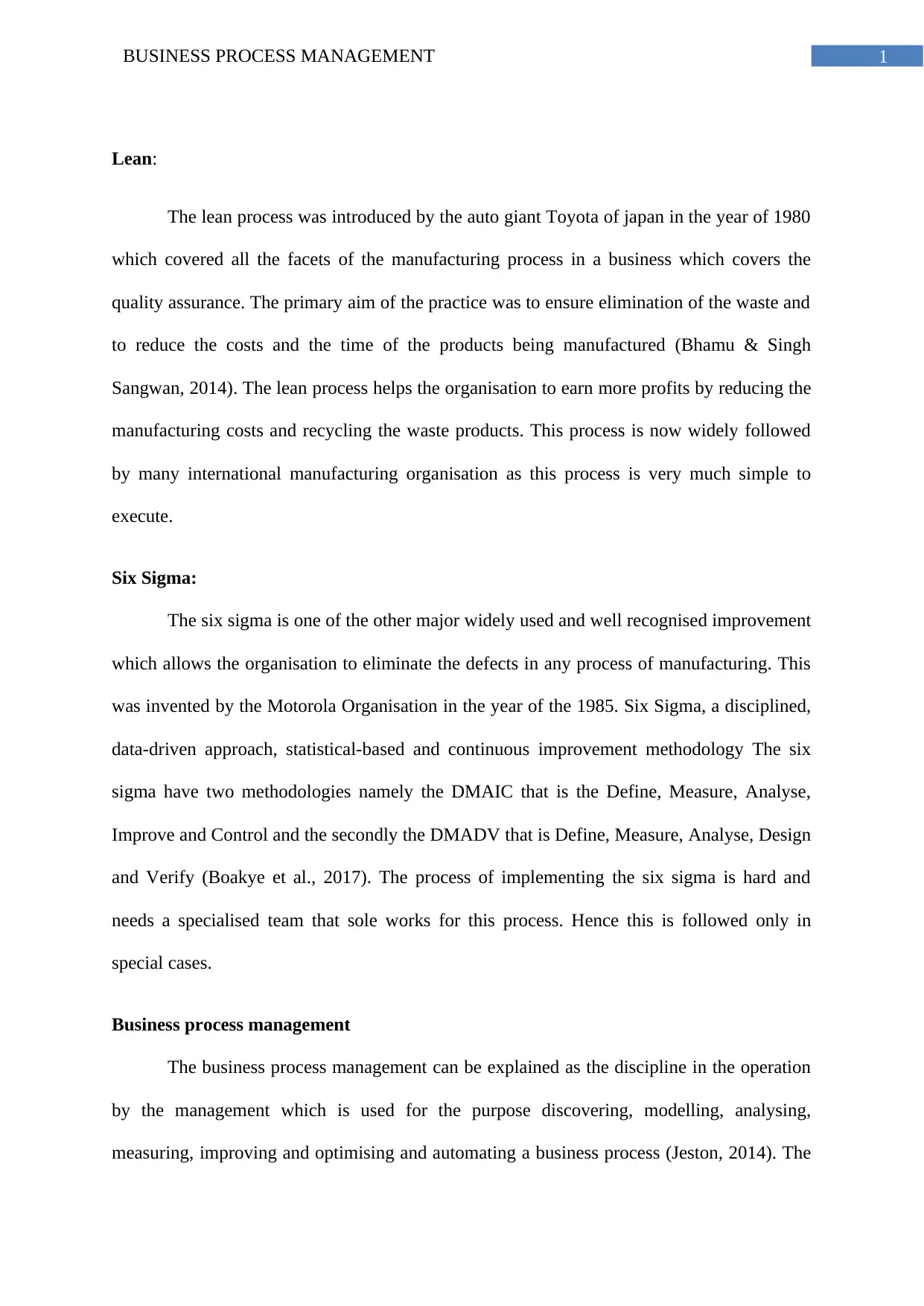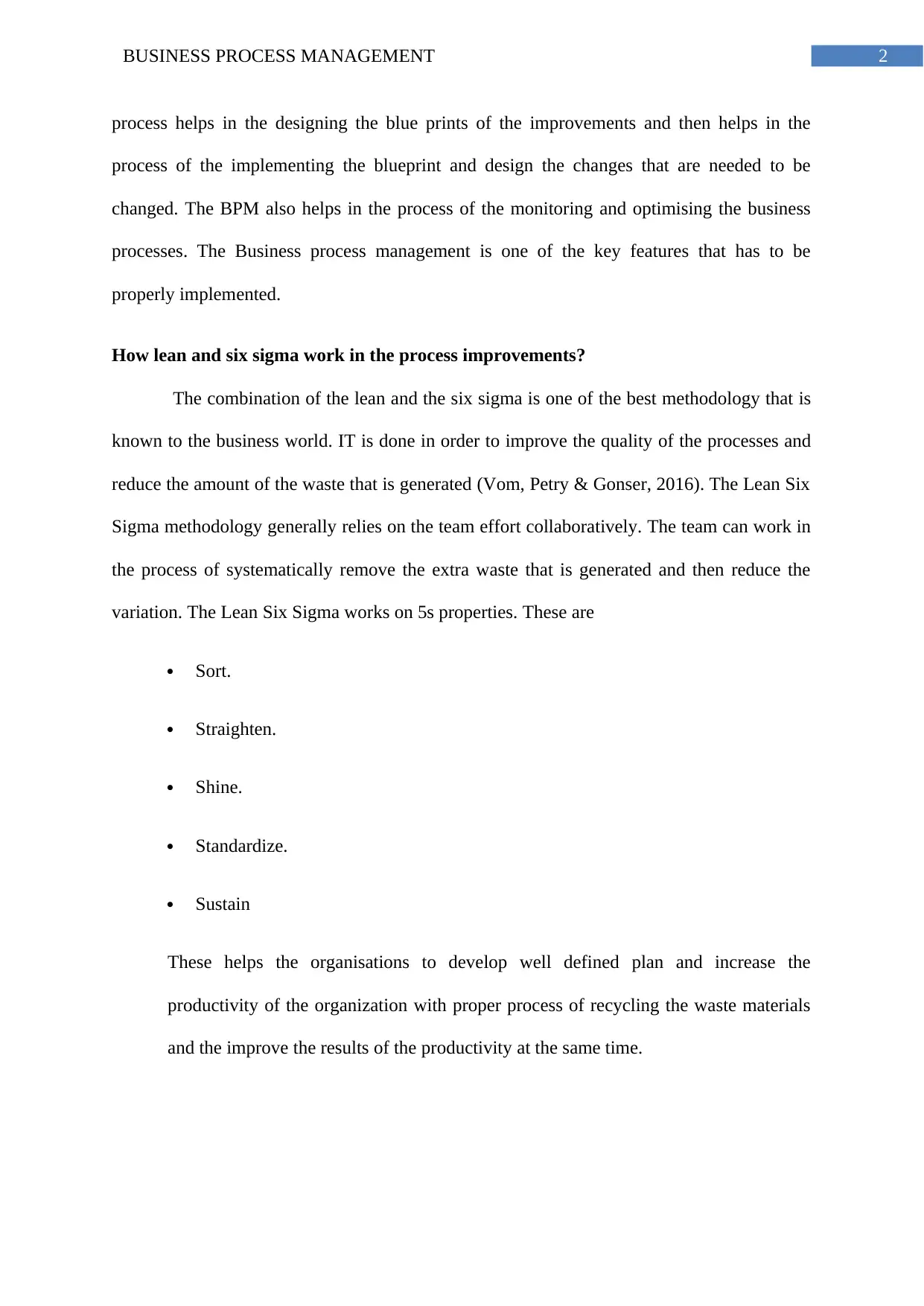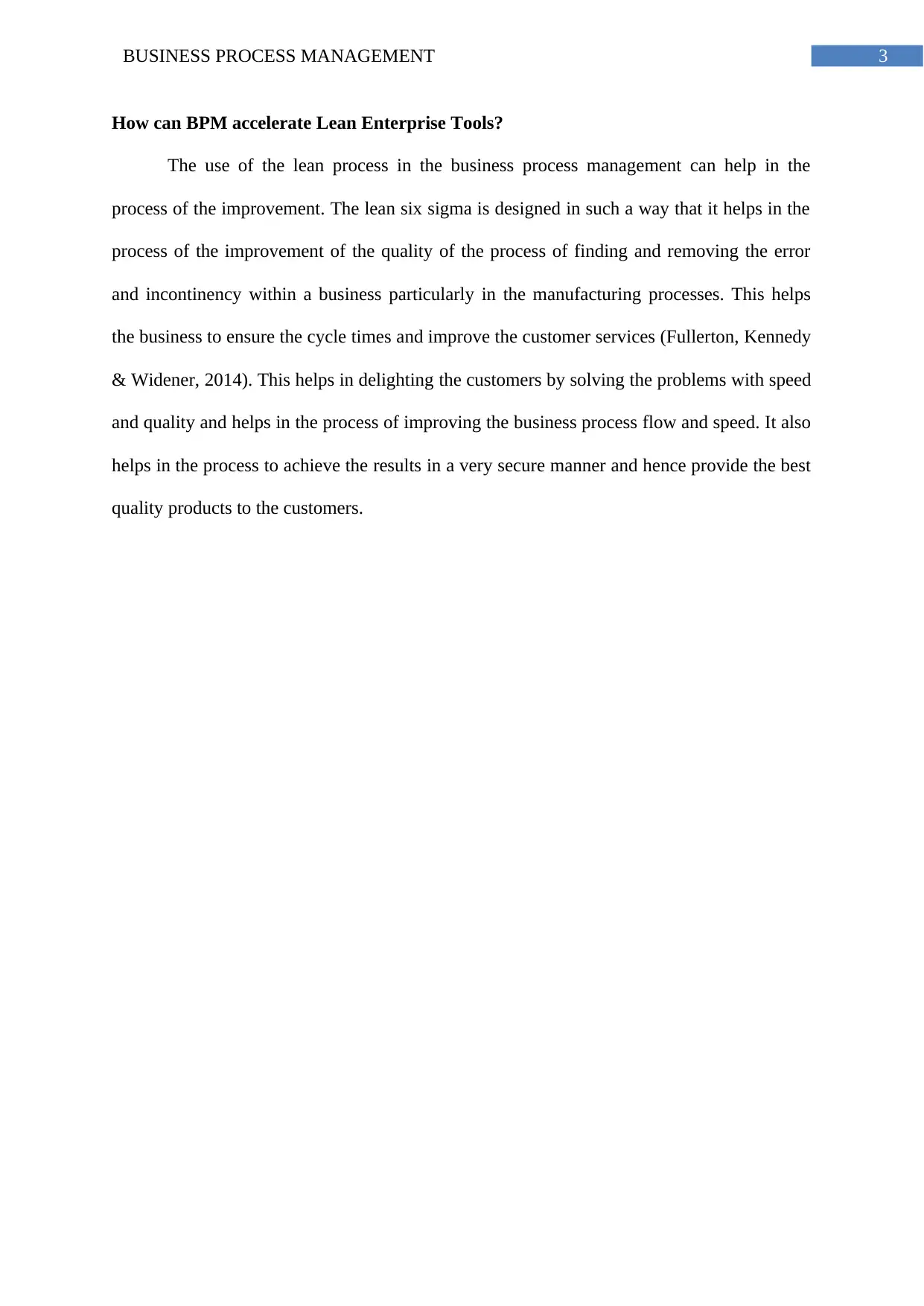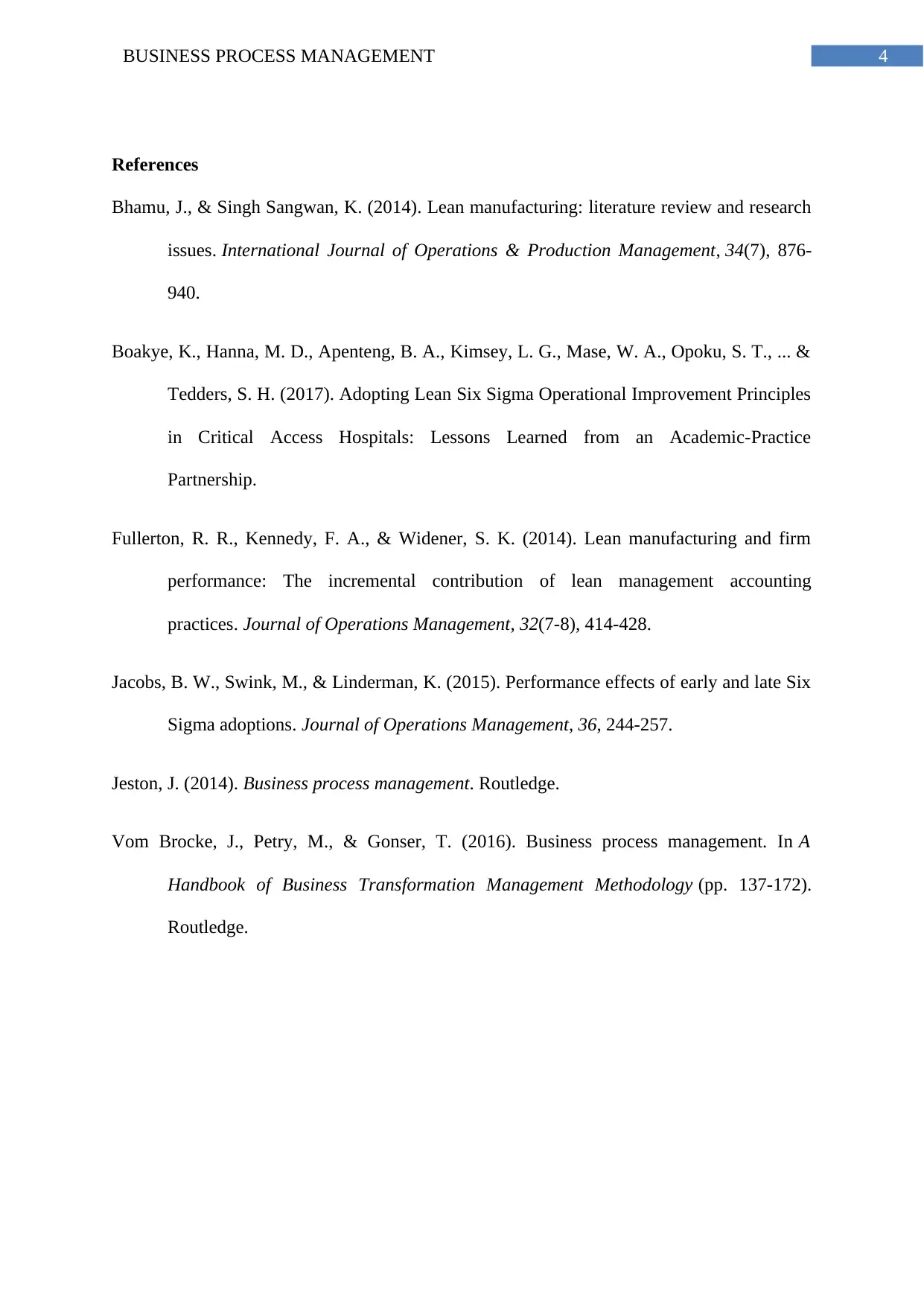Business Process Management: Role of Lean and Six Sigma Analysis
VerifiedAdded on 2023/06/07
|5
|939
|392
Essay
AI Summary
This essay explores the application of Lean and Six Sigma methodologies in Business Process Management (BPM). It begins by defining Lean as a process focused on eliminating waste and reducing costs, originating from Toyota's manufacturing practices. Six Sigma, developed by Motorola, aims to eliminate defects using methodologies like DMAIC and DMADV. The essay explains how BPM involves discovering, modeling, analyzing, and optimizing business processes. The combination of Lean and Six Sigma is presented as a powerful approach to improve process quality and reduce waste through collaborative team efforts and the 5S principles (Sort, Straighten, Shine, Standardize, Sustain). Finally, it discusses how Lean processes within BPM can accelerate improvements by reducing errors, improving cycle times, and enhancing customer service, ultimately leading to better quality products and secure business operations. Desklib provides students with access to this essay and a wide range of study tools and resources.
1 out of 5










![[object Object]](/_next/static/media/star-bottom.7253800d.svg)